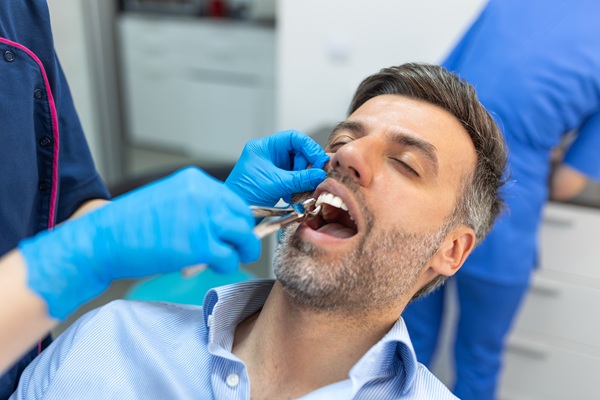How To Reduce the Risk of Dry Socket After a Tooth Extraction
A involves removing damaged, decayed, or impacted teeth. While recovery is usually straightforward, complications can happen. For instance, dry socket is a condition that occurs when the protective blood clot at the extraction site is dislodged or dissolves too soon, exposing the underlying bone and nerves. Fortunately, dry socket is preventable with proper care.
Tooth extractions and dry socket
Tooth extractions are routine procedures that general and family dentists use to remove a problem tooth from its socket in the jawbone. After extracting the tooth, a blood clot naturally forms in the empty socket. This clot acts as a protective barrier that facilitates healing and prevents infection. In most cases, the clot stays in place, allowing the area to gradually recover over the following days and weeks.
Dry socket, medically referred to as alveolar osteitis, occurs when this clot becomes dislodged or fails to develop properly. Without this protective layer, the socket is exposed to air, food, and bacteria, which can cause pain and prolong healing. This condition usually develops within three to five days after a tooth extraction and is more common in lower molar removals.
Common dry socket symptoms include sharp pain, visible bone in the socket, bad breath, or an unpleasant taste in the mouth. Prompt treatment from a general or family dentist can relieve symptoms and support the healing process. Still, prevention remains the most effective approach.
Ways to reduce the risk of dry socket
In general, preventing dry socket involves following the general or family dentist’s post-operative instructions closely to rest and recover. A few simple precautions can significantly reduce the likelihood of complications and promote faster healing. These include:
Avoid straws and suction
Using a straw can create suction inside the mouth, which may dislodge the blood clot that forms after tooth extraction. This suction can disturb the delicate healing tissue and leave the socket vulnerable to irritation, infection, or dry socket. To avoid this, patients can drink directly from a glass and avoid any actions that require suction, such as smoking, for at least several days.
Eat soft foods
In the days following a tooth extraction, choosing soft, easy-to-chew foods can help protect the extraction site and minimize irritation. Hard, crunchy, or chewy foods can disturb the socket or cause debris to become trapped in the wound. Opting for items like yogurt, mashed potatoes, applesauce, and smoothies (without using a straw) can support healing while providing necessary nutrition. These foods require minimal chewing and reduce the likelihood of disrupting the blood clot or causing accidental trauma to the area.
Be gentle when brushing
Oral hygiene is essential after a tooth extraction, but take care not to disturb the healing socket. Gentle brushing and rinsing help prevent infection without disrupting the clot. The area surrounding the extraction site can be brushed with a soft-bristled toothbrush, avoiding direct contact with the empty socket. The dentist may recommend avoiding brushing the extraction site for the first 24 hours and using a saltwater rinse instead.
Protect your smile after tooth extraction
With aftercare and time to rest, patients can make a smooth recovery from tooth extraction. To learn more about avoiding dry socket and recovering after an extraction, reach out to Solon Smiles. We can address any questions and concerns you may have in an appointment.
Request an appointment here: https://www.solonsmiles.com or call Solon Smiles at (440) 252-9544 for an appointment in our Solon office.
Check out what others are saying about our dental services on Yelp: .
Related Posts
Searching for a new dentist near me can be overwhelming, especially when trying to find someone who meets one's clinical needs and personal preferences. Whether due to a recent move, a change in insurance, or a desire for better care, there are several important factors to consider when selecting a dental provider.One of the first…
Learning more about your options for getting new dentures is necessary, as you need to make a choice that works for you. This requires thinking about your current lifestyle and how denture care will fit in. Denture care is very important, as when you take proper care of your dentures, they can last many years.Finding…
Maintaining a robust oral hygiene routine is one of the most effective ways to promote a bright, healthy smile. A general dentist emphasizes the importance of both daily and professional care in maintaining oral health. Here are some helpful tips to help you maintain your smile between dental visits.A general dentist typically recommends brushing at…
Whether you know it or not, your smile directly impacts your confidence and personality. Cosmetic dental services are designed to completely transform your smile, enhancing its appearance and oral health. Learn five popular services we can use to revamp your appearance and outlook on oral health completely.Dental veneers are thin, custom-made shells that attach to…
